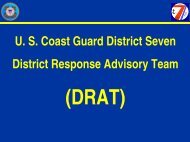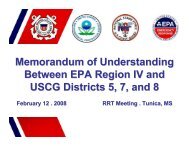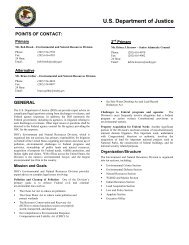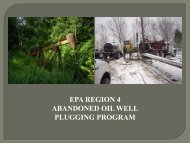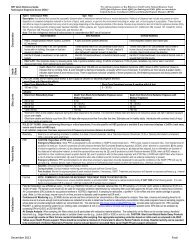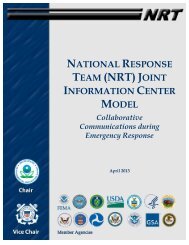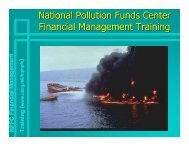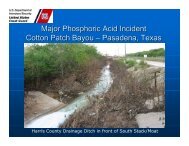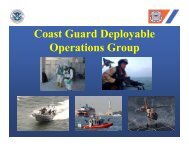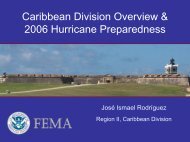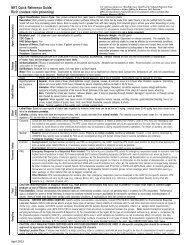USE OF DISPERSANTS - U.S. National Response Team (NRT)
USE OF DISPERSANTS - U.S. National Response Team (NRT)
USE OF DISPERSANTS - U.S. National Response Team (NRT)
- No tags were found...
Create successful ePaper yourself
Turn your PDF publications into a flip-book with our unique Google optimized e-Paper software.
appropriate place for you to use this information is in planning and preparednessdiscussions with your Area Committees and its eventual incorporation of applicablesections into the ACP.Implementation.Safety. Safety of personnel is paramount to the success of the operation. To assist theUnified Command in developing a Dispersant Use Safety Plan, a safety plan checklist isincluded in this appendix. Planners are encouraged to develop safety plan templatesbefore the need to deploy dispersants occurs.Flexibility. Like other functions within a particular response management system, theIncident Commander is free to decrease or expand his/her functional structure based onthe response need. Dispersant operations are no different. For instance, in a lesscomplex response, the monitor role can be combined with the spotter role, thusalleviating the need for additional aircraft. For more complex operations, you maydecide to add additional spray platforms under one spotter or multiple spottersdepending on the acceptable span-of-control. Observers may be assigned to anyplatform if acceptable to save resource expenses. Any combination is possible.Organization. An ICS organization chart is included to show the potential relationshipswithin the Unified Command between the Dispersant Operation Group, the TechnicalSpecialists, and Logistics.Procedure. On Scene Coordinators (OSCs) are encouraged to use this guidance tostandardize the planning and implementation of dispersant use.



